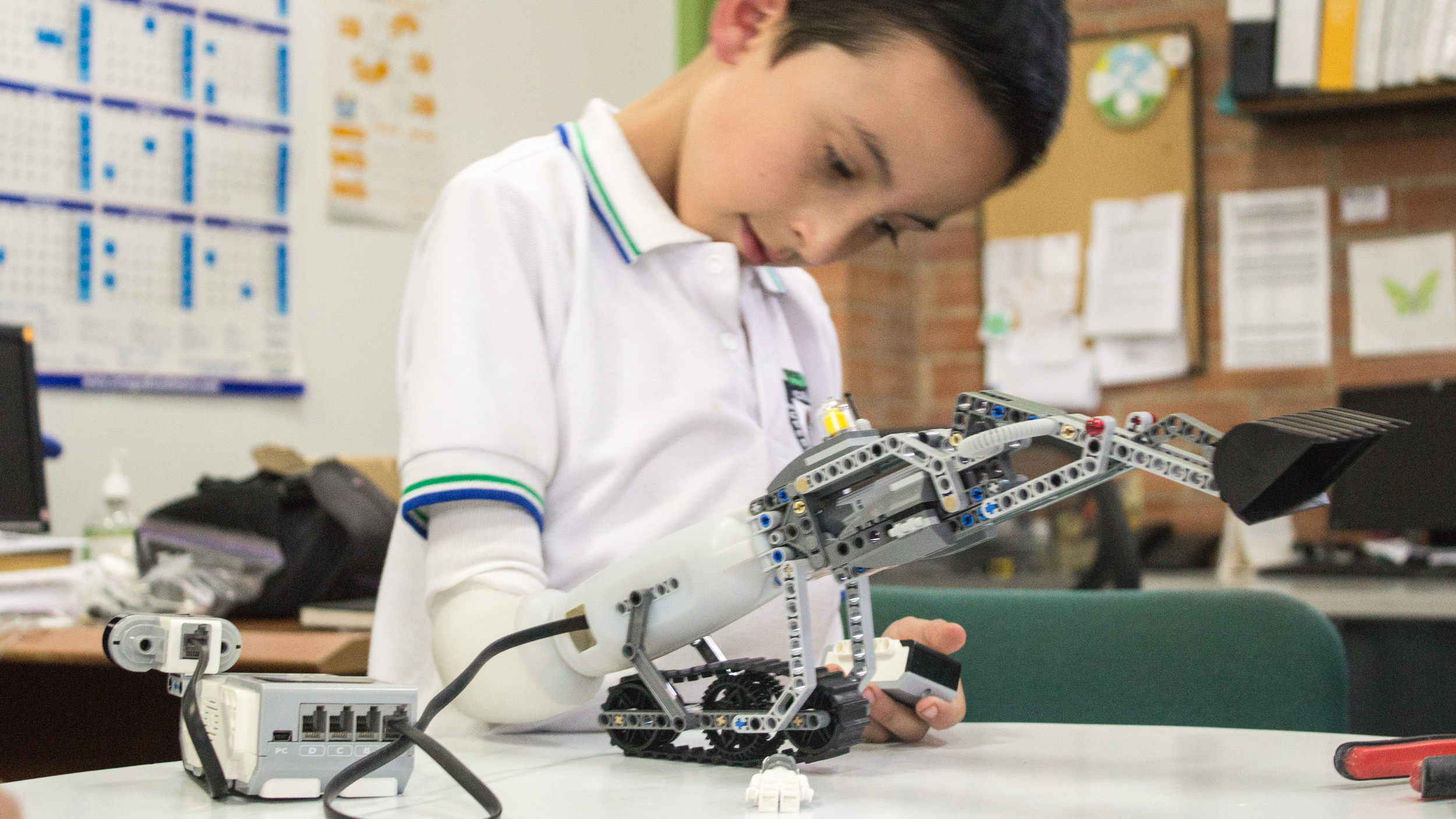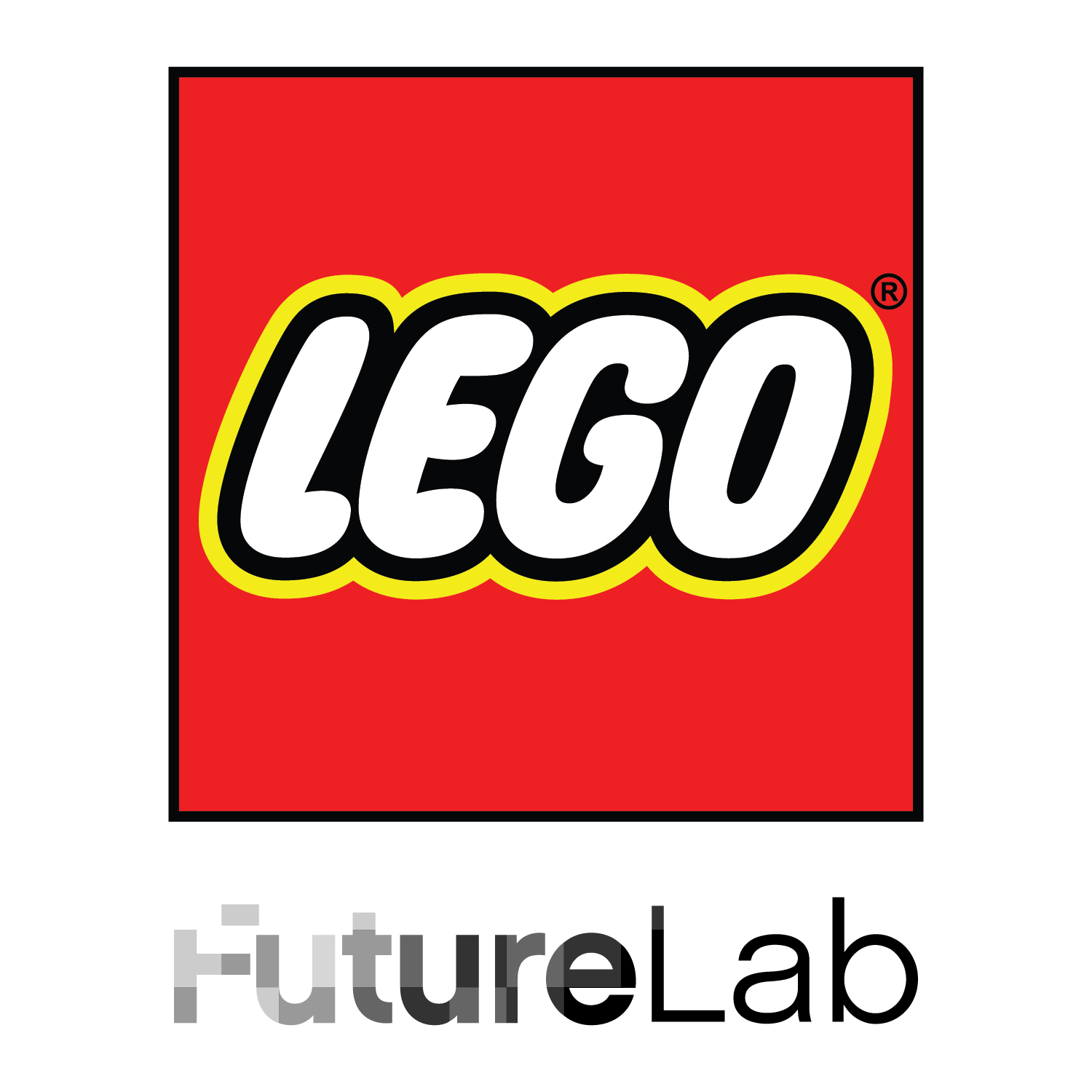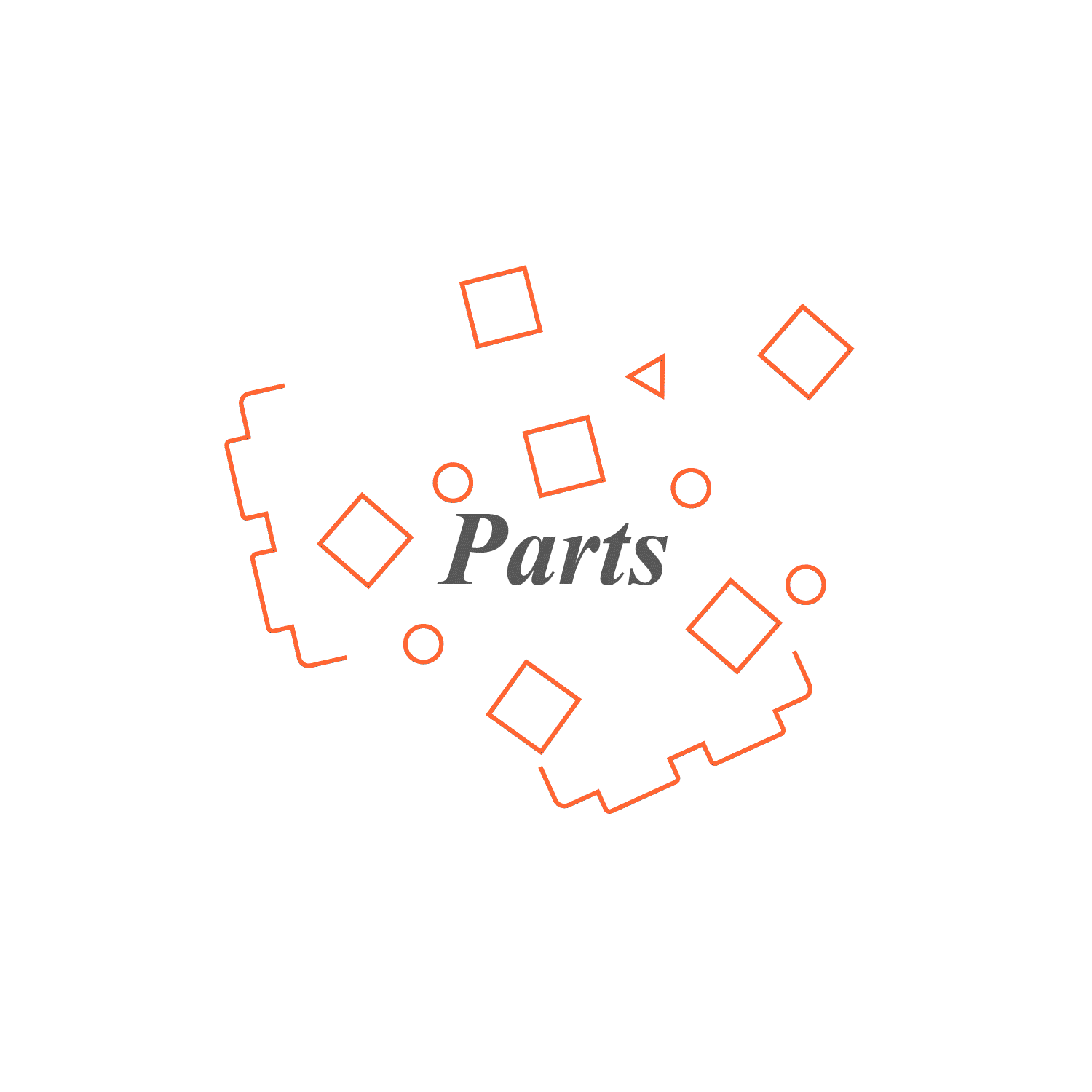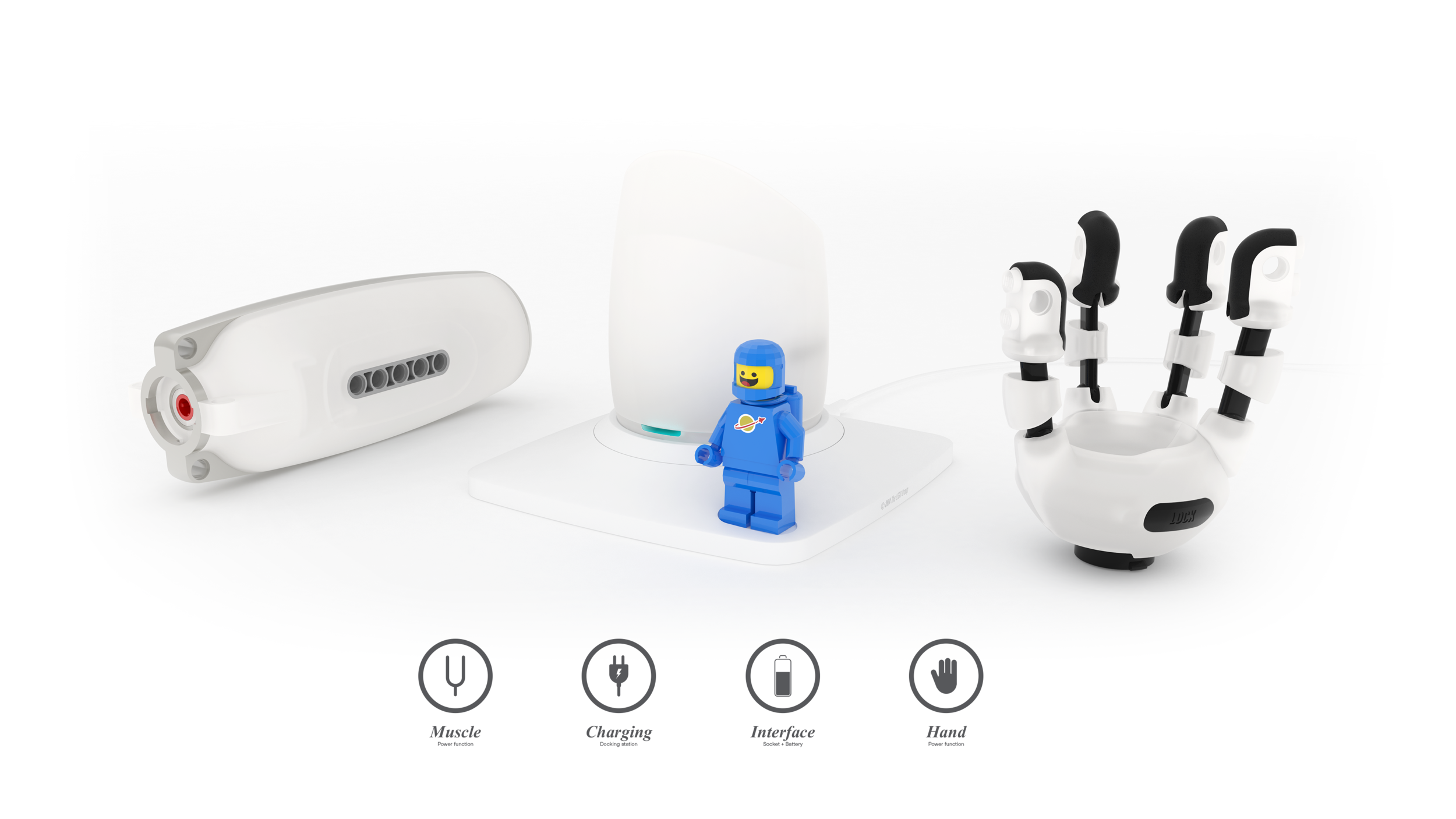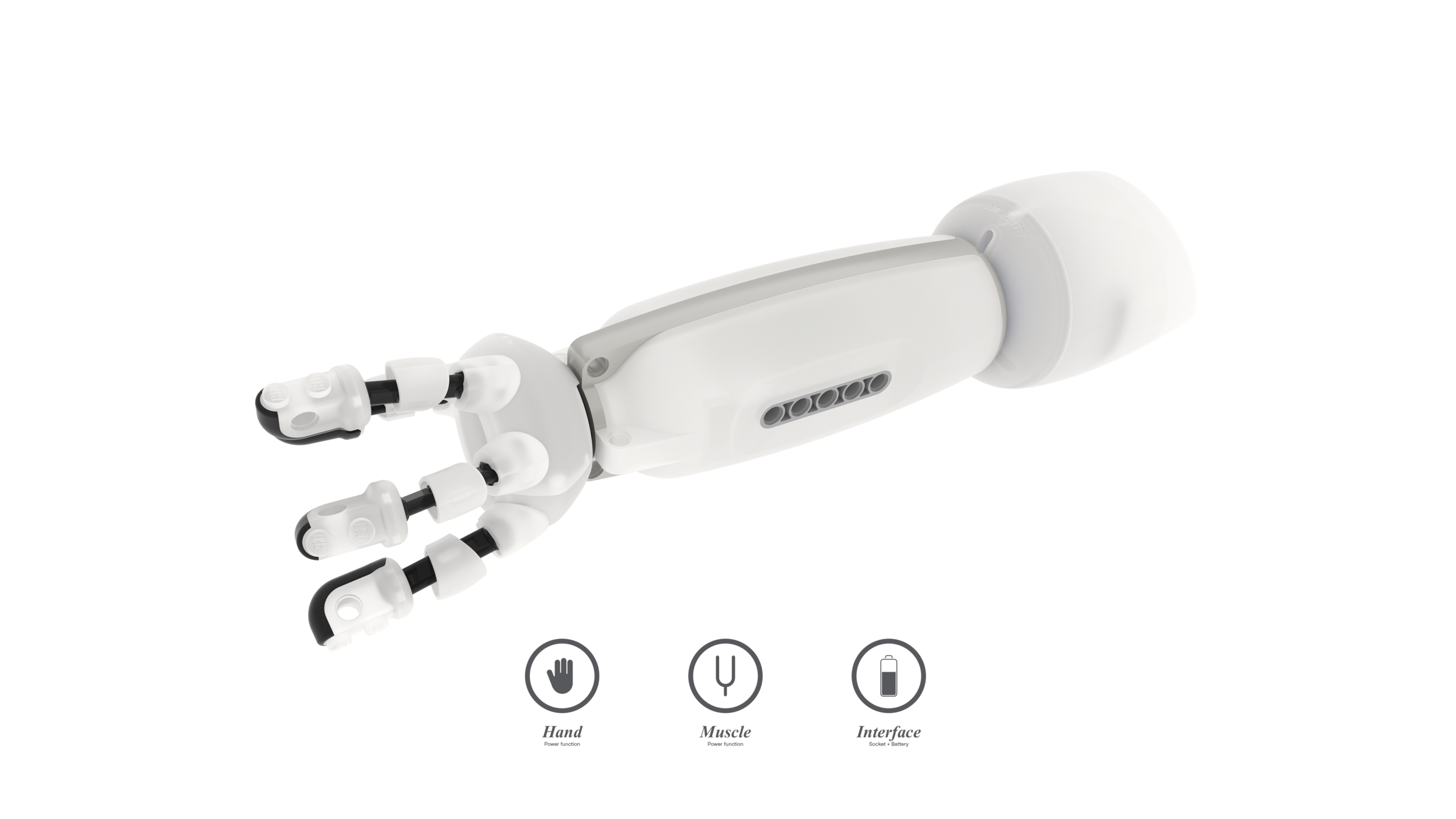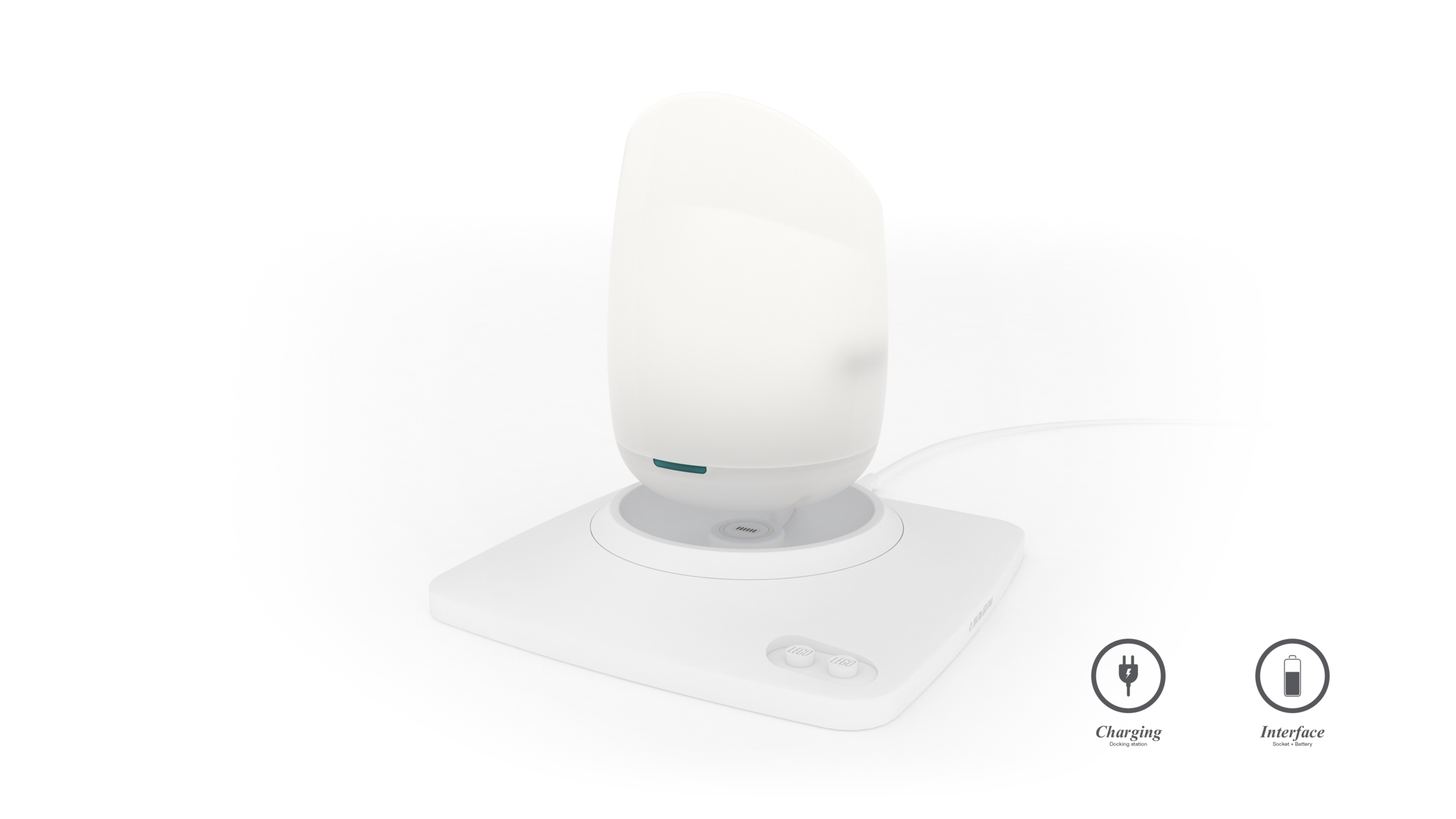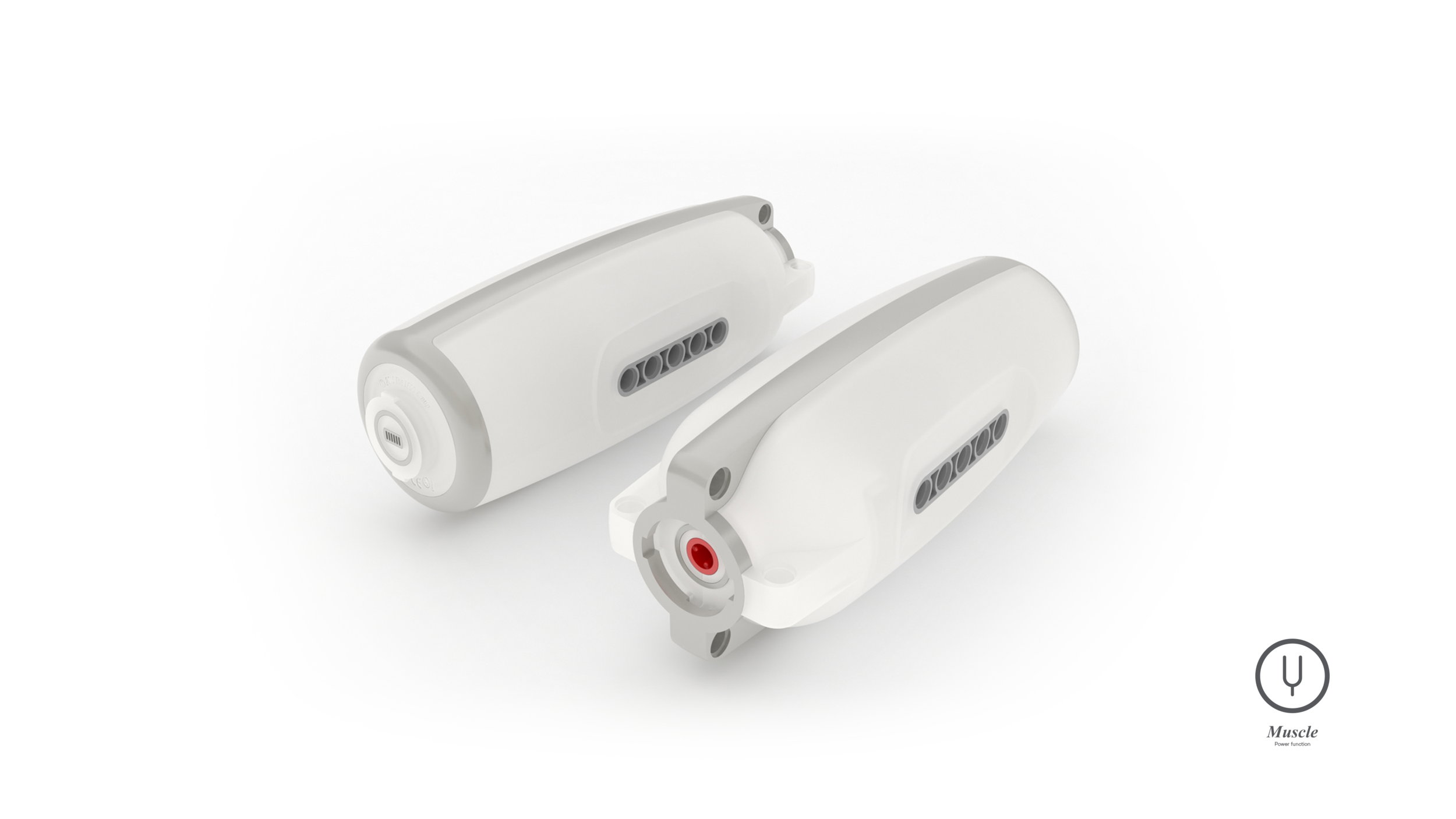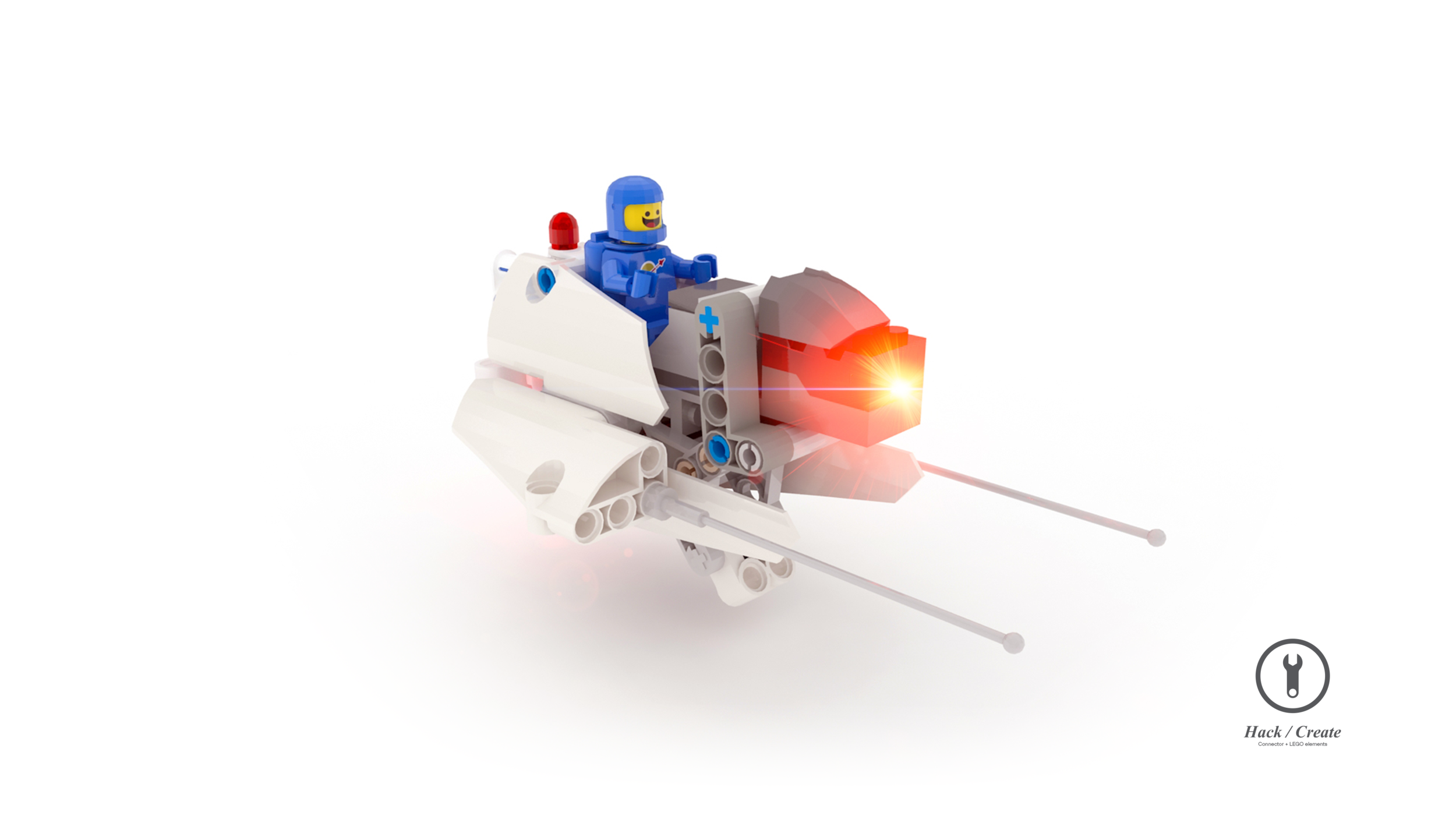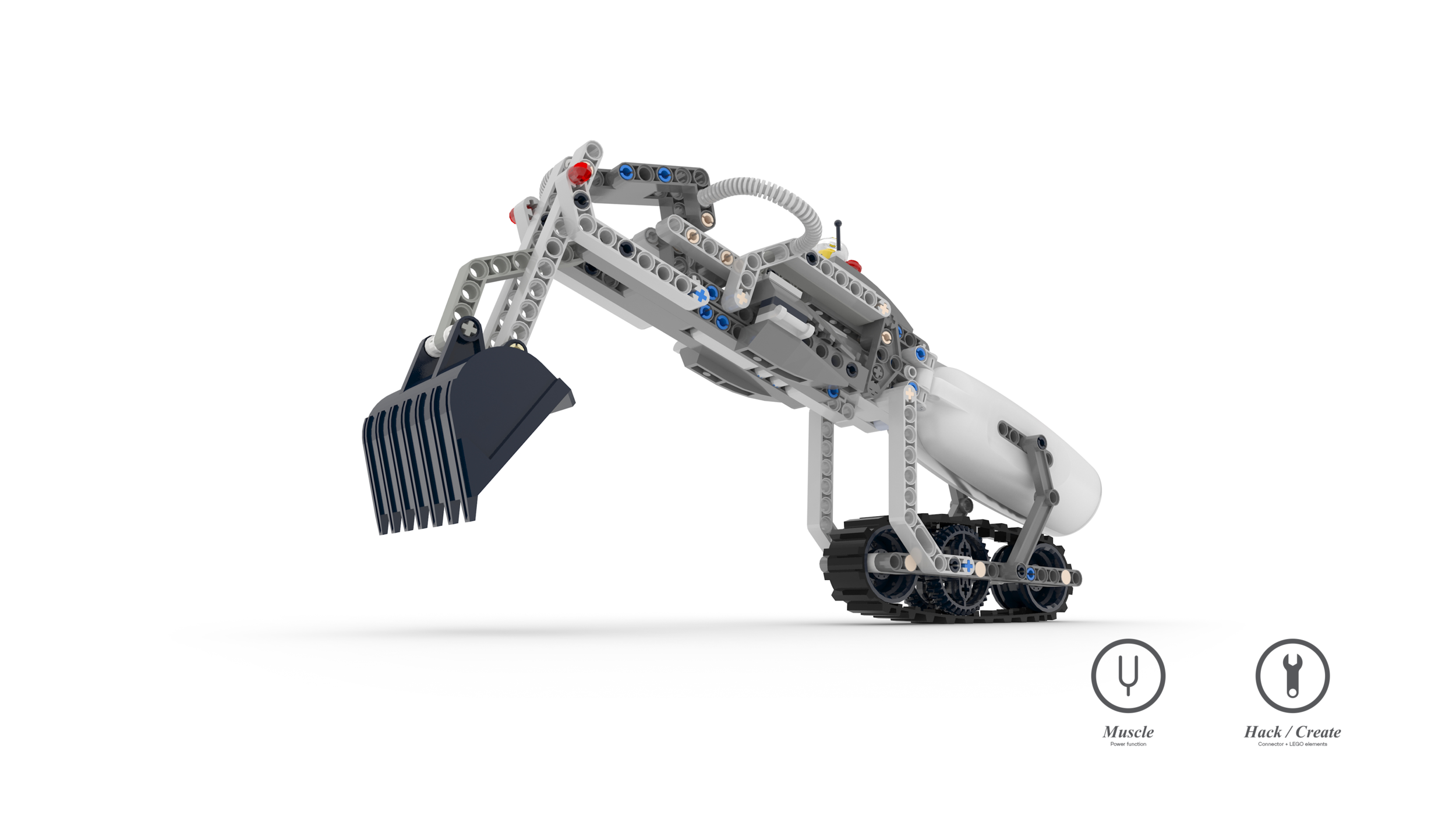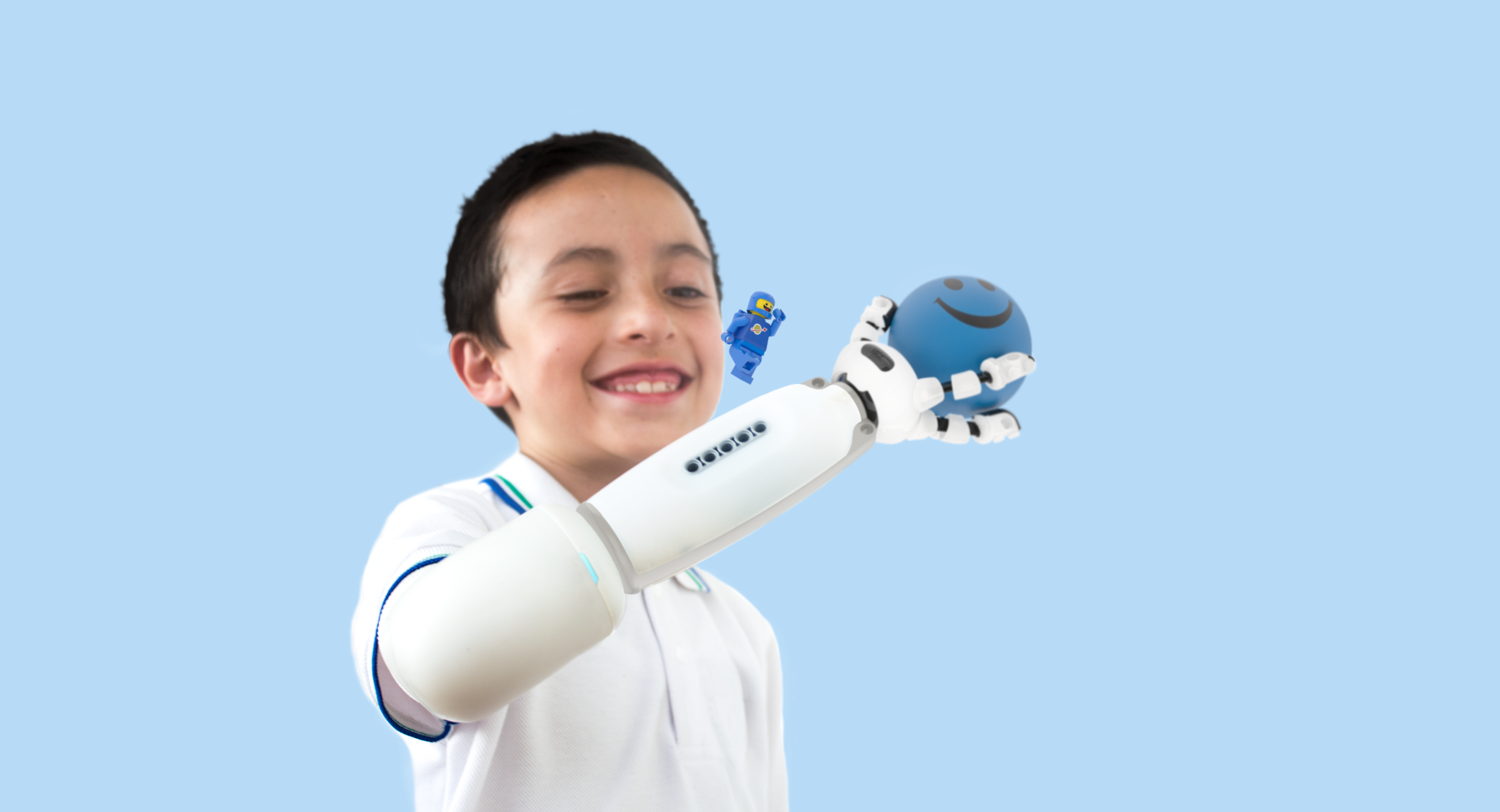
What if we could change the idea of what disability means for everyone?
IKO is a creative prosthetic system that is meant to build confidence amongst children with physical disabilities through empathy, play and creativity.
This Prosthetic system steps aside from traditional prosthetics. It focuses in bringing a new mindset to the kid in terms of what they are able to do, developing their soft skills and introducing the idea of intelligence and creativity being strong drivers to move forward in life. The main concept of this project is to build and enrich the kid’s self-esteem through a learning, creative and social inclusive experience.
It’s all about kids being kids.
Project duration: 4 months / 2014
+ 3 years / 2104 - 2017
Children with disabilities are a large population
But in disability, the physical aspect is not the only thing that really affects this population. The emotional and psychological aspect of their development makes a huge impact in their personality and social life, and usually their social environtment obliges them to mature faster than a kid should.
“Self esteem is not something so easy to build when you are constantly noticed for not being normal”
Soraya Leon, Clinical psychologist, CIREC
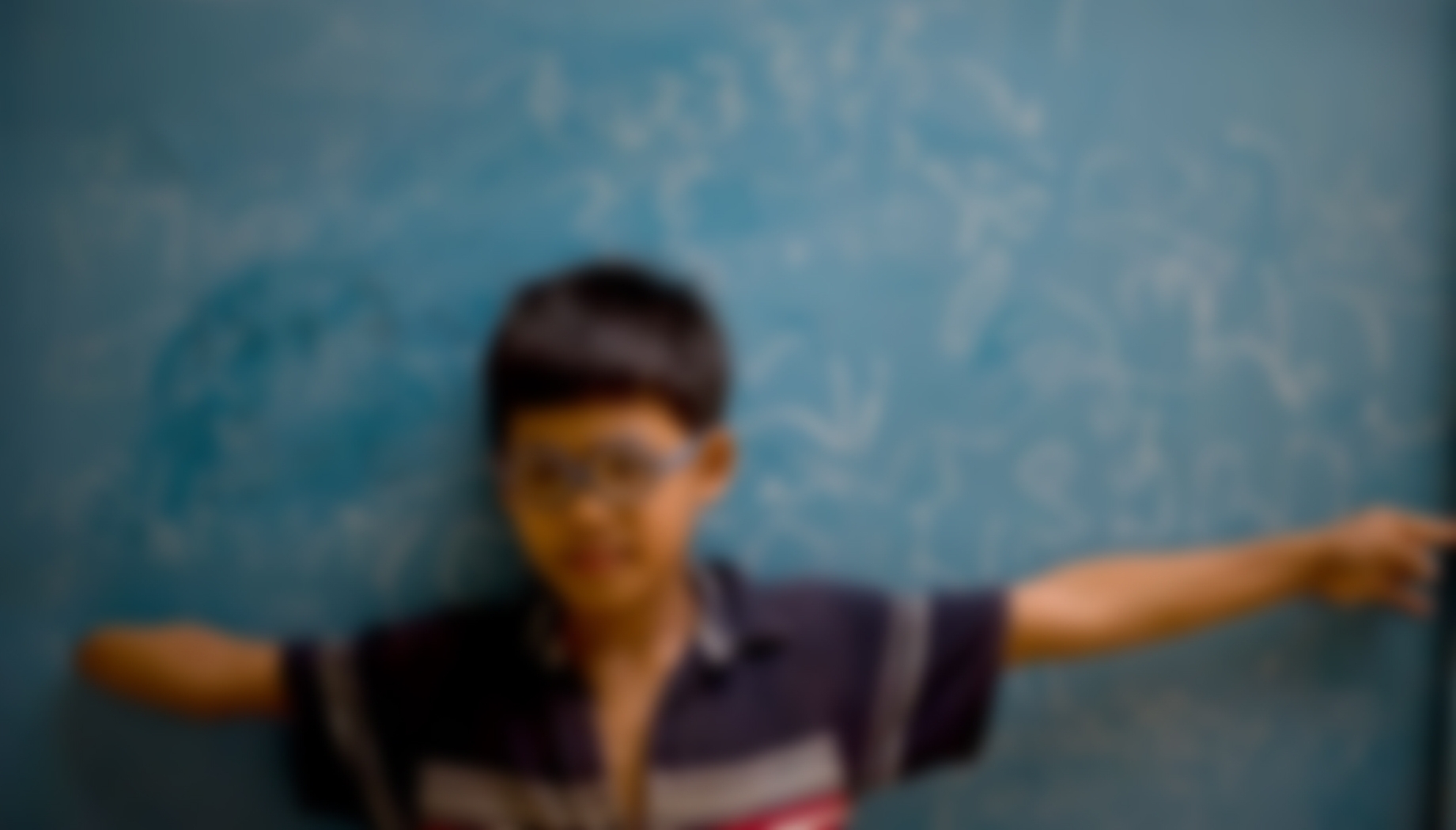
How do prostheses work?
Prostheses have always been modular.
This is a brief timeline of the History of prosthetics from my initial research that I made. I was surprised how resourceful humanity has been around this matter, starting from wood carving all the way to making modular and replaceable parts in the early 50’s. Despite these innovations it was shocking to me was the fact that the only prosthetics for kids I found were merely a shrunk version of a grownup prosthetic.
Please feel free to download a high resolution file of this graphic for print
Learning from the experienced
When trying to really understand how prosthetics work I had to find a strategic partner. CIREC has been rehabilitating people since 1976 during the toughest moments of the armed conflict that Colombia had been living. I was able to work with their whole professional team, from their frontman technician, their surgeon doctor, psychologist, rehab specialist to the CEO to get a deep dive into the prosthetics world and understand that prosthetics lead the way towards independency.
“A prosthetic is not just a tool, it’s part of a complete rehabilitation process where the mind is as important as the body. The prosthetic is a path towards independence”
Soraya Leon, Clinical Psychologist
The rehabilitation process focuses in reinforcing the practical skills of the patient complemented with psychological support, in grown ups this process i meant for them to re-enter the social norm and be a functional part of society.
But when “disability” ( even at birth ) happens to kids, they are not really aware of being different until they face society. The shock is so great that kids only option is to be resilient towards really rough social conditions, their childhood becomes so short because the only way to fit in a society full of constant adversity and reject is to grow up, be mature.
Why giving a kid a shrunken version of an adult’s prosthetic when their experience of disability is way different than grown up’s ?
A child experiencing disability has greater needs than a grown up not just physically but emotionally. Soft skills are the key element for a successful interaction with society: The ability to make friends, empathize, collaborate and creative problem solving can give more independence to a child than any prosthetic in the market.
A design research partner
When I met Dario he was 8 years old thanks to CIREC. I was able to learn about him, his family his context, as much details as I could catch. I was humbled by his family, their care and support and totally surprised by how amazing Dario is, how much positive attitude he had to collaborate and trust me on my journey to find inspiration and understanding disability in children.
I was able to spend lots of time with him and his family, meet his school and understand his social circle a bit more in depth. we had great play moments that opened my eyes to not so obvious things like, kids not liking their prosthesis because of how unpractical they are to put away at night, in his words “there’s just no place for it in the room” all the way to sharing his sketch book and having one of the most interesting conversations I’ve had about a robot and a mechanical eye and how this robot made this eye for himself because…
“it’s a part for his body and no one knows what he needs better than him”
Dario
What if kids could “build” their own prosthetics according to their own needs while having fun?
Learning, Creating, Being kids.
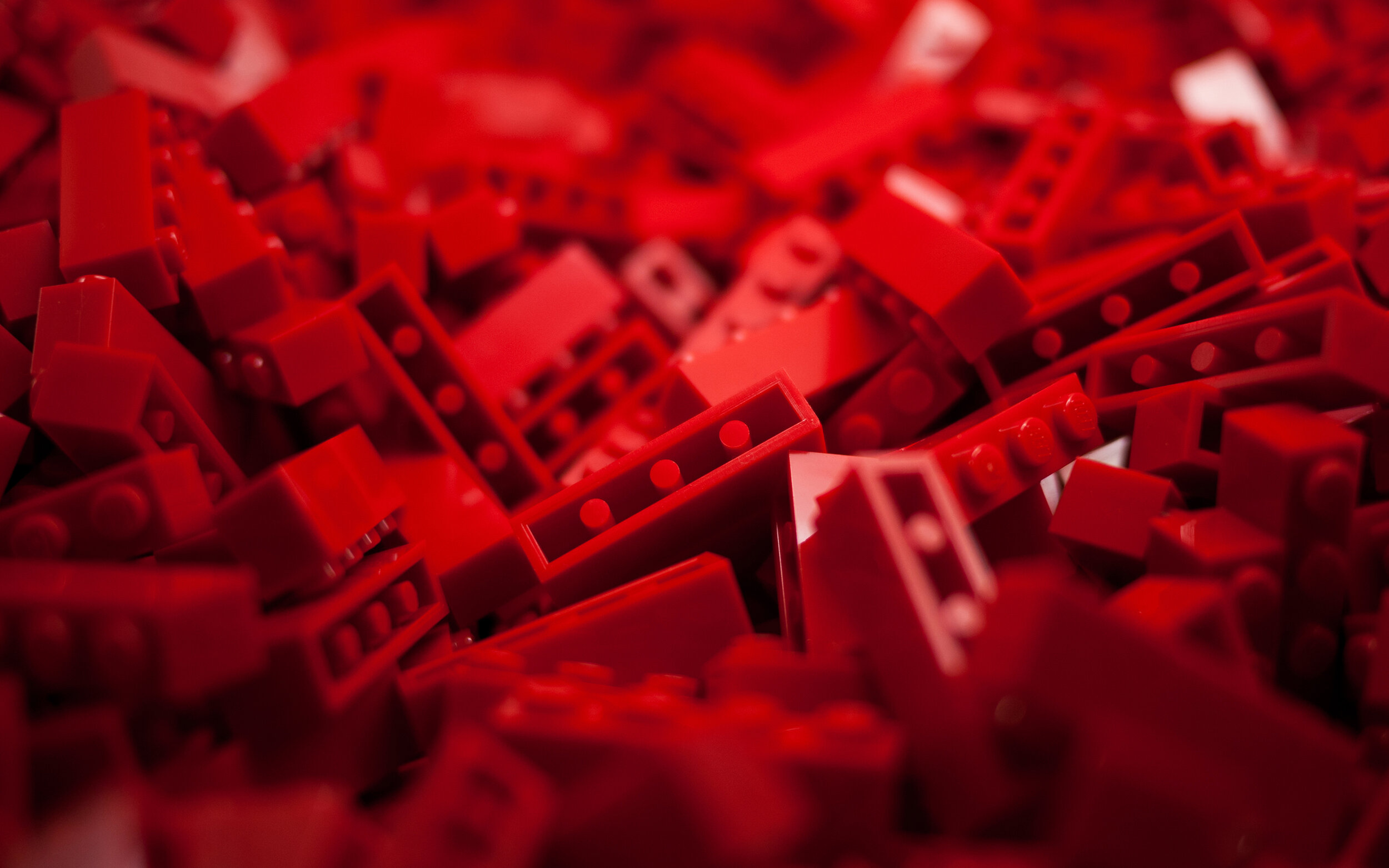
An strategic approach to disability through play
LEGO is considered one of the best ( If not THE best ) toy in the world ( I’m a bit bias ). It’s a creativity enabler and a proven problem solving experience.
During my time working at Future lab ( back then ) I got inspired with the immense potential this toy has to create social links. During play sessions I got to learn about how kids play and in a social context how many roles are taken, how storytelling evolves from one minute to another and most importantly, how this toy is the perfect element for kids to make tangible something they just had in their imagination seconds ago.
The LEGO Future Lab team was so generous to spend time with me and get a better understanding on my findings in the field and inspiration for possible direction on how to approach this goal. I’m forever thankful to the people in the team to light the path of this project with what they do best: advocate for kids.
I had the opportunity to work with insights managers, directors, designers, even with one of the few legendary LEGO Master builders, and I took with me not just a bunch of bricks to prototype with but principles to apply to my design journey:
“This should be about kids being in the driver’s seat, this should be about kids expressing themselves, speaking their minds”
Mette Larsen
Kids are the ones who really know what their needs are, and not just the “functional” needs to replace a limb, but specially their emocional needs. The opportunity in this project was to put kids in the driving seat, to allow them to build their own prosthetics according to their own needs. But building a LEGO set is one thing, and trying to build a whole prosthesis is way different… or not?
How do we empower kids to build something as complex as a Prosthesis?
Introducing kids to complexity by using the analogy of LEGO bricks as parts that once put together, they become a building. Just like a LEGO set, you can either follow the instructions or build anything, the result is a “Building”
But what happens when that building you just made is able to connect and disconnect from another building and still be intact? We can use this analogy to explain how this communication between sets is called modularity.
Prototyping a gesture for building
Using a familiar communication interaction: Push + Twist
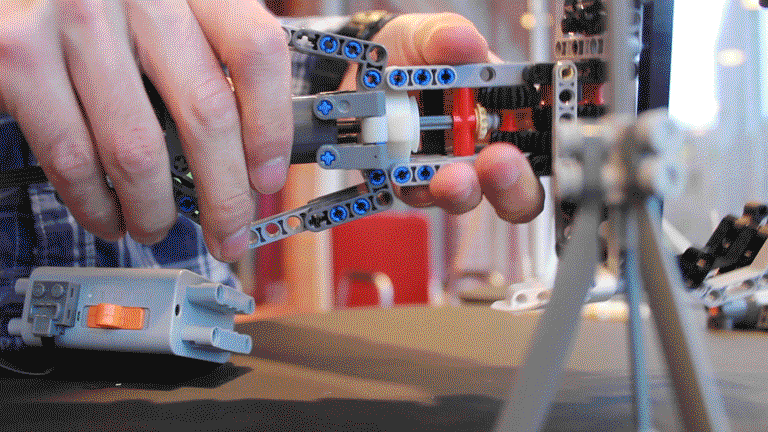
A building gesture to communicate functionality
Push + Twist
Once kids are able to identify and build what could be named as a module, they needed to easily connect these parts without any help and using one hand only.
Coming up with a new LEGO block was key to enable kids to be in control of their prosthesis, what they want to put on it, how they want to do it, even using this block to hack into existing lego sets and wear them. After prototyping this interaction with LEGO bricks I felt it was promising and time to start designing what the prosthesis might look like.
Finding a balance between Play and Everyday functionality required a systemic approach
The system is designed for the modules to interact with each other using the push and twist gesture, and the modules have considered the size and scale of the LEGO system, this means that they can not only connect with the Connector brick designed but also be part of a LEGO building, as an example I designed two LEGO sets: A spaceship that interacts using the connector brick designed, and a Backhoe that also takes the Arm module as part of the set.
Prototyping for research

LEGO sets + Storytelling = Design research
A Challenge to concept proof
The main concept of the project was to have kids with disability interacting with LEGO bricks, usually they are easy to build, but how do you deal with frustration or asking for help?
This set was inspired in the idea of having a different kind of hand. Was this something kids were be interested in?
The Backhoe had 70 pages of instructions with medium difficulty level that integrated LEGO Technic elements and even illegal 3D building. it was a tough set designed to put Dario’s patience to test and his ability to integrate people in his experience.
A light story to play together
One of the most important aspects of the project was to integrate the “non disabled” kids into Dario’s world.
For this, I designed a spaceship with one of my favorite characters that was easier to build, with a trigger and light brick as an inner volume and short “wings” as a provocation for kids to put more stuff or not.
The Trigger Spaceship was meant for a focalized test with one of Dario’s best friend. I needed to understand the perception of kids before, during and after the experience. having something like a spaceship makes us focus on a simple concrete story and it needed to be interesting to build but also simple and quick.
I love spaceships because it’s so easy to play together, who’s the pilot and who’s ground control. Is there a mission or are we just building something cool?
The project was displayed at Ars Electronica Center in Linz within their SecondBodyLab exhibition for about 3 years.
